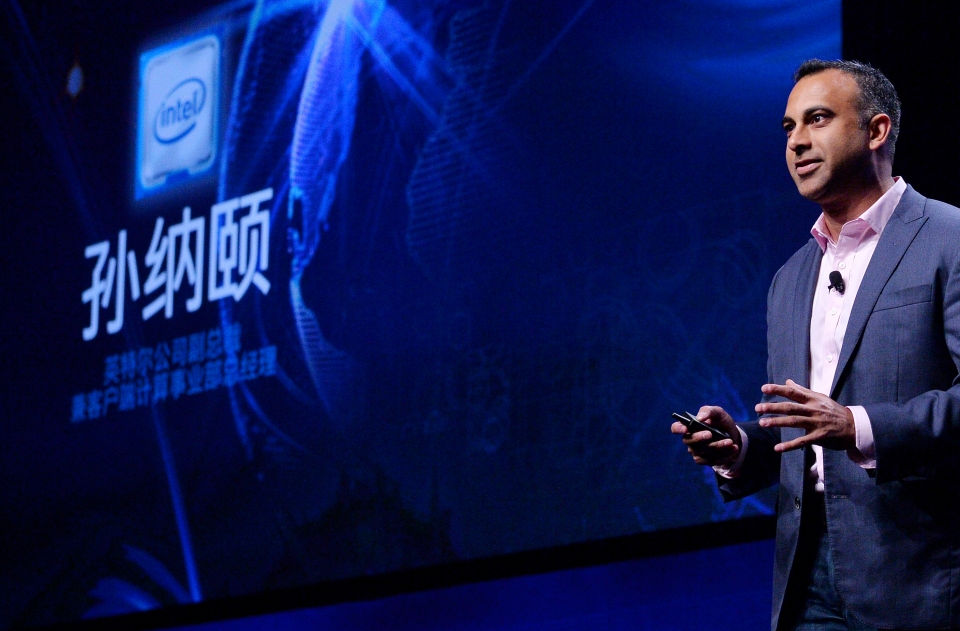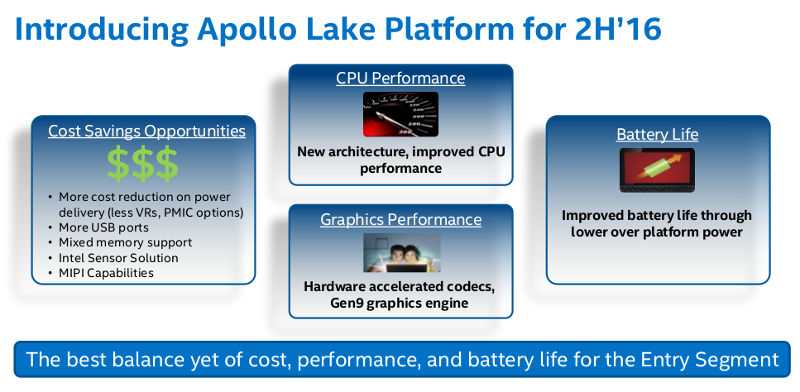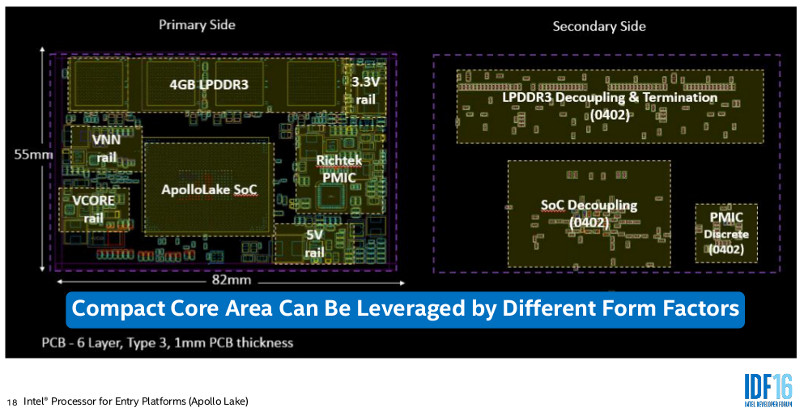

Intel announced its Apollo Lake platform, successor of the Cherryview platform, aimed at affordable all-in-ones, miniature PCs, hybrid devices, notebooks and tablet PCs at the IDF in Shenzhen last week. Based on 14 nm process technology, it will feature a new x86 microarchitecture named Goldmont that promises improved CPU performance, as well as a new graphics core that features Intel’s ninth-generation architecture (Gen9) currently used in Skylake processors for hardware-accelerated 4K video playback from hardware decoding of HEVC and VP9 codecs.


It also promises improved battery life compared to previous generation systems. It will support dual-channel DDR4, DDR3L and LPDDR3/4 memory, with flexible memory options for PC makers to choose based on performance and costs. It support SATA drives, PCIe x4 drives and eMMC 5.0 options for different form-factors. Intel also proposes to use USB Type-C along with wireless technologies with Apollo Lake-powered systems.


Intel says that there are numerous Apollo Lake BOM savings opportunities so that makers can save somewhere between $5 and $7 on BOM, compared to the previous generation SoCs. Intel did not reveal clock speeds, pricing and few other details, but it’s says that PCs with Celeron and Pentium-branded processors based on Apollo Lake platform will be introduced in the second half of 2016.
